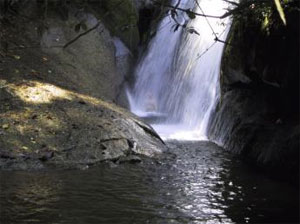Shiatsu
Shiatsu ( Japanese ) – is a massage technique originating in Japan. Shiatsu therapy was developed by Tokujiro Namikoshi and follows similar principles to western massage using the principles of anatomy and physiology.
The thumbs, palms, and fingers (no knees or elbows are used in the foundation form of shiatsu therapy) are used to apply pressure to designated areas of the body. Shiatsu therapy is not related to Traditional Chinese Medicine (TCM), however some practitioners combine the two fields. Namikoshi Sensei had no background in TCM and only developed his therapy through trial and error, finally gaining acceptance in the late fifties. The confusion about TCM and any meridian connection is due to a Japanese law at the time, that to practice any hands on therapy one had to have a license in Amma Therapy, which Namikoshi Sensei was forced to get, and he gained separate recognition for Shiatsu Therapy from these other hands on modalities (again in the late fifties). Although the points may look similar in location the actual application and essence of practice between Shiatsu therapy and TCM are very different. The essence of shiatsu is “Diagnosis and Therapy combined”.
There are many derivative forms of shiatsu therapy all over the world and most were developed by a graduate of The Japan Shiatsu College giving them a well grounded education in the foundation of shiatsu. These very same instructors gave workshops anywhere from a few days to a few months to introduce their ideas to already trained practitioners.
Shiatsu Time Line: (short version)
- 1912 Namikoshi Sensei first used his technique on his ailing mother
- 1919 Namikoshi Sensei found therm term Shiatsu and decided to use it to describe his therapy.
- 1925 Namakoshi Sensei opened his first clininc for Shiatsu Therapy. Shizuto Masunaga Sensei born.
- 1940 Namakoshi Sensei opens first Shiatsu college.
- 1953 Namakoshi Sensei and his sons introduce Shiatsu Therapy to the USA , Dr BJ Palmer, father of Chiropractic medicine.
- 1955 Shiatsu Therapy first recognized by Japan government but only in conjunction with amma and moxibustion.
- 1957 Shiatsu Therapy officially recognized by Japan as a separate and distinct therapy.
- 1958 Shizuto Masunaga graduates from Japan shiatsu College , begins to teach Psychology at the college as well.
- 1964 Shiatsu officially defined by the Ministry of Health and Welfare in Japan .

“Shiatsu technique refers to the use of fingers and palm of one’s hand to apply pressure to particular sections on the surface of the body for the purpose of correcting the imbalances of the body, and for maintaining and promoting health. It is also a method contributing to the healing of specific illnesses.”
This being said, the following three points were set as the major premise of shiatsu therapy:
1) To use the bare hands (no tools, elbows, knees or feet)
2) to press the surface of the body (no rubbing, stroking or pulling)
3) to aim for the maintenance and enhancement of health or recovery of illness.
Shiatsu is used to treat the following symptoms:
- back pain
- migraine and many kinds of headaches
- whiplash injuries and neck stiffness
- reduced mobility
- menstrual pain
- digestive problems
- asthmatic symptoms
- sports injuries
- frozen shoulder
- sciatica
- hypertension
